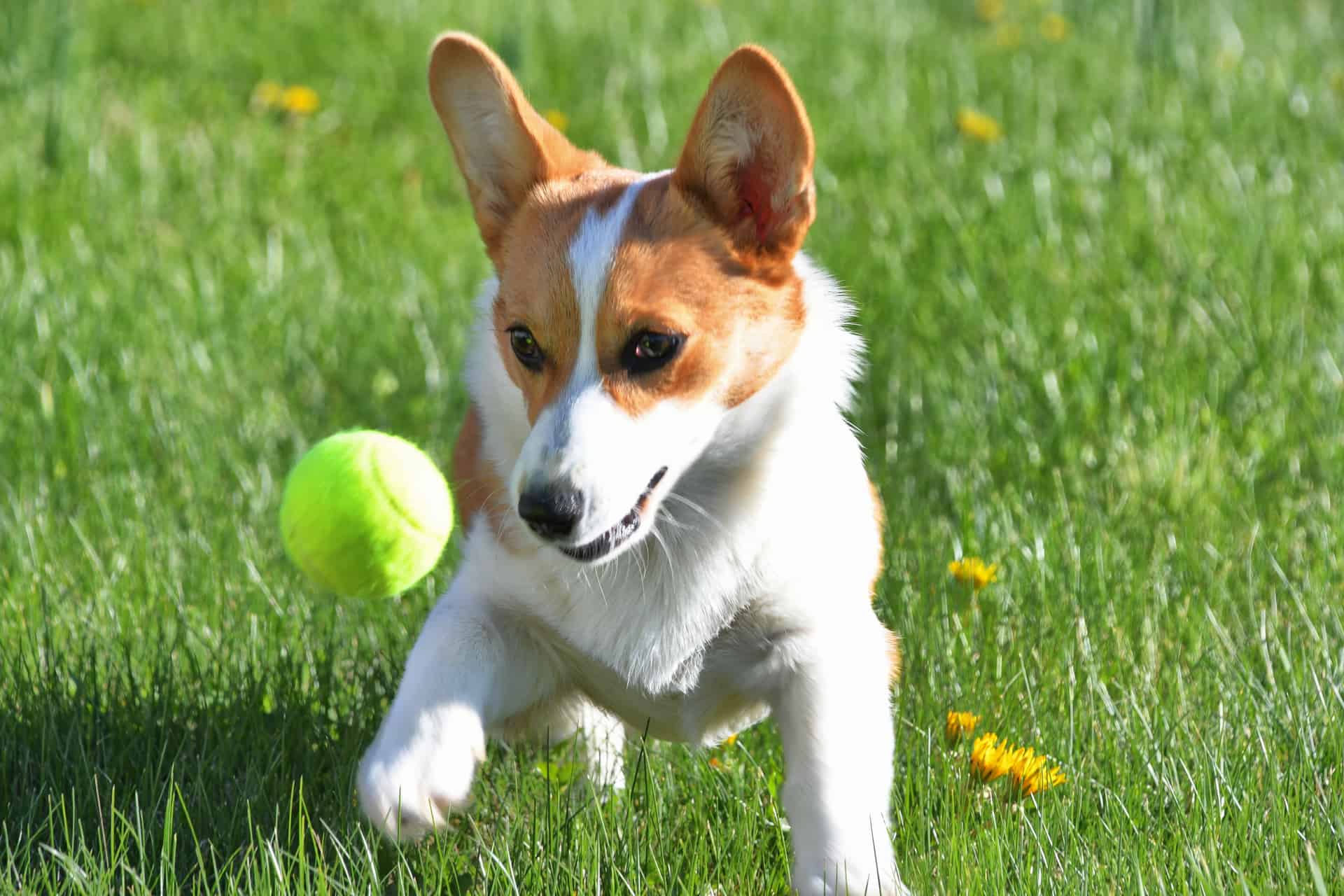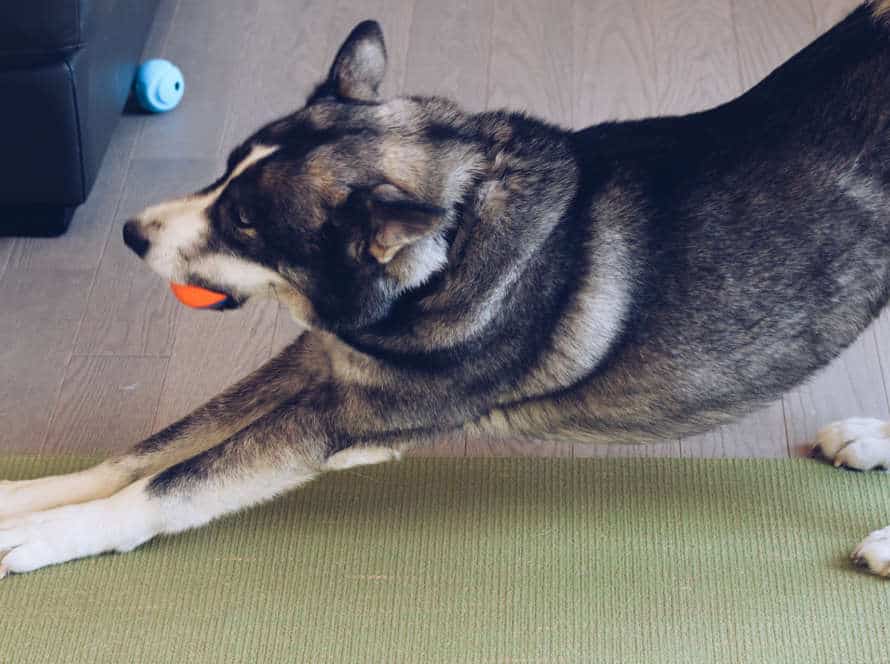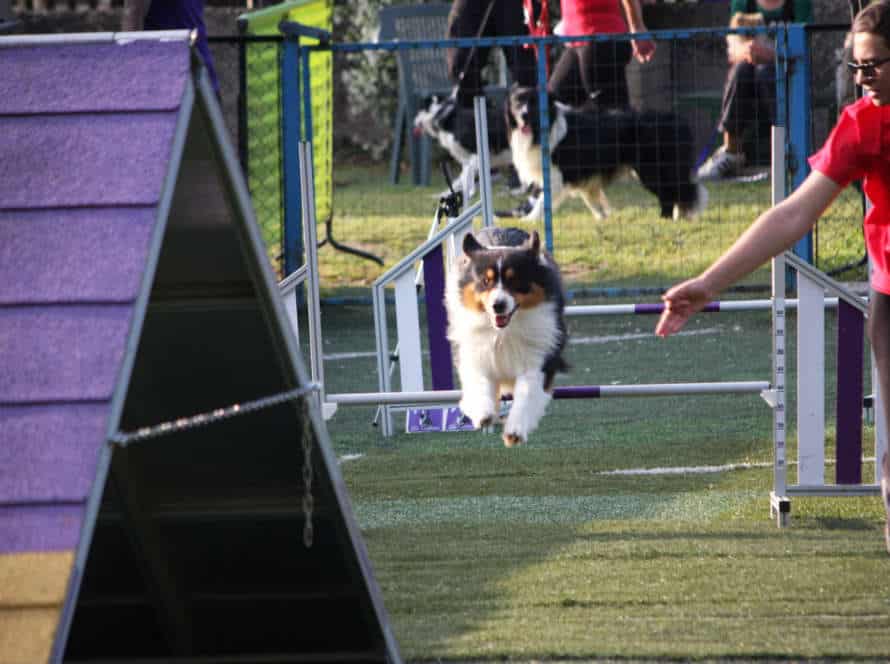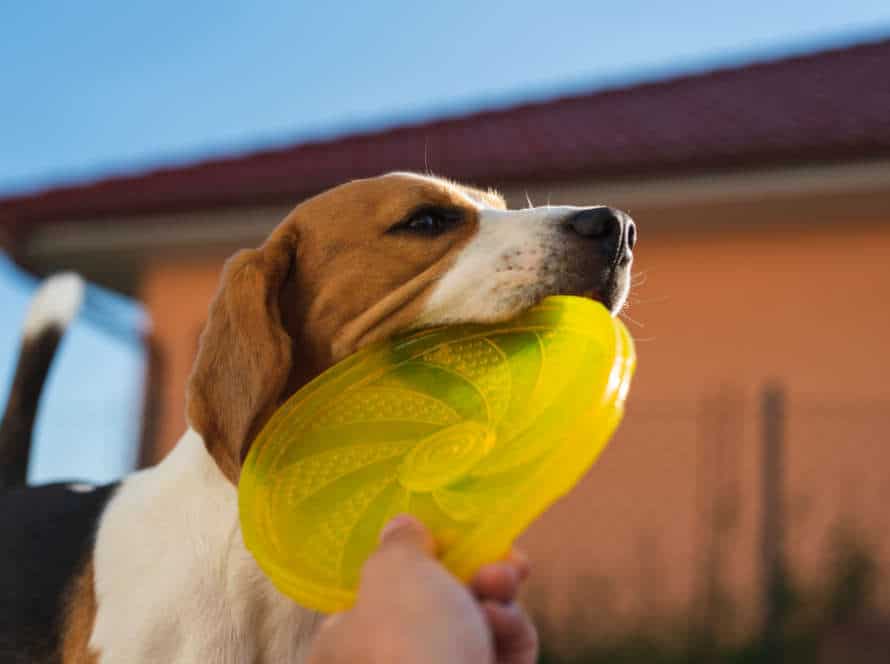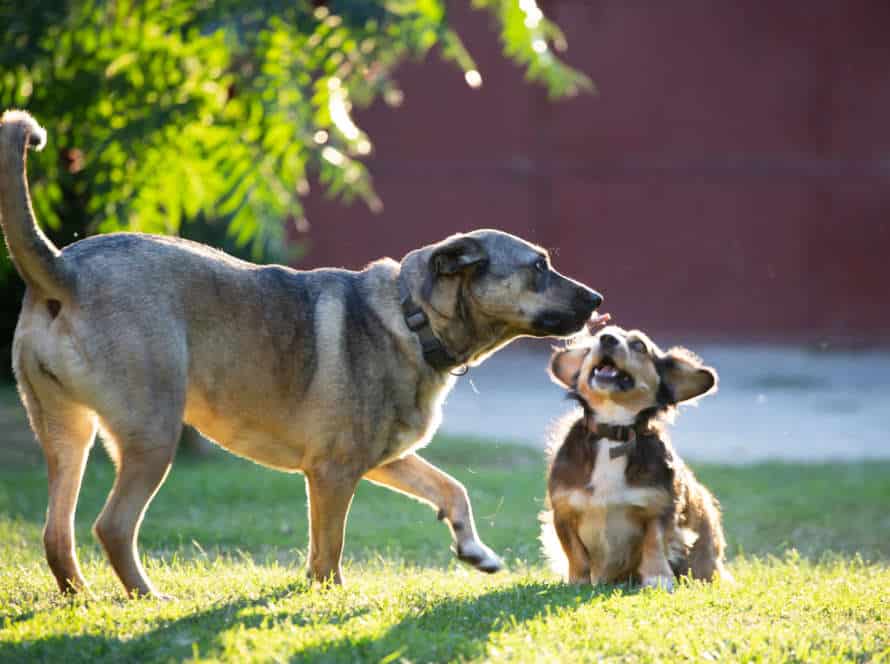Why Start Early with Puppy Fetch?
Fetch is the perfect place to begin with your pup when they’re young. It’s an activity that can be tailored to their age and energy. It’s a great way to get exercise, stimulate their minds and build a bond between you and your pup. Starting early with fetch can help create a strong connection and a lifelong enjoyable activity. Here’s why starting early is beneficial!
Benefits of starting young
Beginning early with pup fetch has long-term advantages – both physical, mental and emotional – for your furry best buddy. Here are the advantages of starting young with pup fetch:
Physical Benefits: Through throwing and getting back the ball, fetch strengthens muscle and improves cardiovascular health.
Mental Benefits: Fetch provides mental stimulation for your pup’s growing brain. It helps boost attention, problem-solving abilities, and coordination. Plus, it reduces harmful behavior.
Emotional Benefits: Through playing fetch with your pup, you can bond and construct trust. It also lessens anxiety and stress. Doing so will help you make a deep, lasting relationship with your furry friend.
Remember, begin early, keep training brief, and use positive reinforcement for a good experience. Pro tip – Pick the right size and type of ball, and play in a secure, enclosed area.
Building a strong bond between owner and puppy
Fetching is a fun, rewarding way to create a strong bond between an owner and pup. Starting early gives the puppy a jumpstart for loving fetching for life.
Benefits of fetching for puppies include:
- Exercise – Fetch requires physical activity, teaching pups to stay active and expend energy.
- Training – Fetch can help strengthen simple commands, like “come” and “drop it”.
- Mental Stimulation – Playing fetch encourages cognitive and problem-solving skills.
Before starting, be sure the environment is safe for the puppy to move around, and the toys are age-appropriate and safe for them. Additionally, make sure the game is positive and encouraging, with rewards and treats for good behavior. Pro tip: Starting fetch training early helps develop a great relationship with the pup and their owner, making training easier in later years.
Setting good exercise habits
Early puppy fetch? Great idea! It sets good exercise habits and ensures lifelong fitness & fun. Fetch engages a pup’s natural instinct to chase & retrieve. It’s great mental & physical stimulation, plus strengthens the bond with you.
Tips to start:
- Choose a soft & lightweight toy for pup’s size & breed.
- Find a safe area to play – backyard or dog park.
- Toss the toy and encourage pup with treats or praise.
- Gradually increase distance & difficulty.
- Make the game fun & varied – try different toys, hiding spots & challenges.
Pro Tip: Regular exercise, like fetch, reduces destructive/anxious behavior and promotes pup health.
Types of Fetch Toys for Puppies
Puppies and fetch? A match made in heaven! Playing fetch is a great way to bond with your pup and helps with their development. There are lots of fun toys for puppies to fetch! Let’s explore the different types, and see how they benefit your pup.
Soft rubber fetch toys
Soft rubber fetch toys are great for puppies! They’re gentle on their teeth and easy to grab. Here are some types of toys suited for puppies:
- KONG Puppy Toy: Perfect for teething puppies. Also can be filled with treats to encourage playing.
- Chuckit! Ultra Squeaker Ball: Durable rubber, high bounce, and a built-in squeaker for fun.
- Nylabone Puppy Chew Toy: Soft rubber, great for teething and relieving sore gums.
- Hartz DuraPlay Ball: Made of natural latex, it’s soft, chewable, and durable.
Remember to supervise your puppy while they play and choose the right toys for their size, age, and activity level.
Pro tip: Rotate their toys for them to stay engaged and avoid boredom.
Tennis balls
Tennis balls are a popular pup toy due to their size, bounciness, and durability. But it’s important to choose the right type and supervise your pup during playtime.
Remember:
- Select a non-toxic tennis ball that fits in your pup’s mouth.
- Don’t use balls that are too small as they can be a choking hazard.
- Supervise your pup when playing with the ball.
- Replace it if it’s worn down or damaged.
Using tennis balls can give your pup exercise, mental stimulation, and bonding time. But it’s essential to choose wisely and watch them to ensure safety.
Frisbees and flying discs
Fetch toys for puppies – like frisbees and flying discs – are super popular. They give pups an outdoor activity to develop their coordination and strength.
When choosing one, here are some popular options:
- Standard Frisbee: Curved edges, in various sizes, made from tough materials.
- Soft Frisbee: Made from soft, flexible materials that are gentle on teeth and gums.
- Squeaky Disc: Similar to traditional flying discs, but with a built-in squeaker.
- Glow-in-the-Dark Disc: Special material glows in the dark – great for nighttime play.
No matter what you choose, always supervise your pup and pick a toy that fits their size and chewing strength.
Tips for Introducing Fetch to Puppies
Fetch is a brilliant activity for you and your furry friend. Introducing fetch to puppies early can help them learn to like it – plus, look forward to playing with you! To ensure your pup enjoys the game, here are some essential tips. Let’s chat about the process and the tips!
Start with short play sessions
Starting with short play sessions is key when introducing fetch to puppies.
Benefits include:
- Short play sessions keep puppies engaged and interested.
- Puppies are still developing their physical abilities and stamina, so short play sessions help them rest and recover.
- As the puppy grows and develops, gradually increase the length of play sessions.
Use a soft, lightweight ball or toy that’s easy to retrieve.
Play in a safe, enclosed area – like a fenced yard.
Never force the puppy to retrieve the toy – use positive reinforcements like treats and verbal praise.
Pro Tip: Supervise your puppy during playtime for their safety.
Use positive reinforcement
Positive reinforcement is a great way to teach pups fetch. Here are tips for introducing it:
- Start with gentle throws of a soft toy, using an excited voice to encourage them to chase it.
- Reward them with treats and praise when they bring the toy back.
- If they are not interested, use a yummy treat or a different toy.
- Don’t force it or punish them if they don’t return it quickly. Make it fun and positive to help them with their natural retrieving instincts.
- With patience and reinforcement, they will learn to love playing fetch with you!
Incorporate fetch into training sessions
Introducing fetch to puppies is great! Here are some tips to make it part of training:
- Start off easy: Throw a soft, light toy over a short distance.
- Use rewards: Praise or treats when pup brings back the toy.
- Make it harder: Gradually increase distance and add obstacles.
- Make it regular: Include fetch in daily walks or playtime.
Remember, fetch should be fun. Make it enjoyable for life!
Safety Considerations While Playing Fetch with Puppies
Fetch is amazing for burning off energy and helping your pup’s coordination. Plus, it’s a great bonding activity! But, there are safety considerations you should keep in mind with puppies. This article will tell you how to make sure your pup has a safe and enjoyable time.
Avoid playing with small objects
Playing fetch is a great way to have fun with your pup and give them exercise. But, it’s important to use safe items when playing. Here are tips for safe playtime:
- Don’t use tiny things like sticks or balls – they can be swallowed and cause choking or blockages.
- Choose soft toys that are big enough for your puppy to hold in their mouth without swallowing it.
- Make sure the playing area is secure and free of anything bad.
- Teach your pup to drop the toy using positive reinforcement and training. Don’t take it away by force – this could cause biting or aggression.
- Always supervise your puppy during playtime – this avoids accidents and injuries.
Monitor the puppy’s playtime
Playing fetch with your pup? Keep safety in mind! Here’s what you should consider:
- Pick a safe spot – away from sharp objects or busy areas.
- Use the right-sized ball – not too small that they can choke on, or too big that they can’t carry.
- Monitor their play – keep it short, take breaks, and avoid overexertion or overheating.
- Don’t throw the ball too high – to prevent them from jumping and hurting themselves.
- Train them to drop the ball – so they don’t swallow it or try to chew it.
Prioritize your puppy’s safety and health, and consult a vet if you have any concerns. Pro tip: Use toys designed for puppies and always supervise.
Be aware of weather conditions
When playing with pups, it is vital to be aware of the weather. Here are some safety tips:
- Hot weather: Heatstroke and dehydration can easily occur in puppies. Avoid fetch during the hottest hours. Make sure they have access to water and shade.
- Cold weather: Hypothermia and frostbite can happen in freezing weather. Dress them warmly and limit time outdoors.
- Wet weather: Wet surfaces can lead to slips and falls. Avoid playing on wet grass, mud, or other slippery surfaces.
- Stormy weather: Loud noises can cause stress and anxiety. Refrain from fetch during storms and provide a safe and comfortable space.
Common Mistakes to Avoid During Puppy Fetch
Fetch is a fun game for pups! It helps them develop skills – physical, mental and emotional. But, you gotta watch out for certain errors when you start playing fetch with puppies. These mistakes can make the activity less enjoyable and even dangerous.
Here are the most popular ones to dodge:
Over-exerting the puppy
Playing fetch with your pup is a great way to connect and exercise. But, over-exerting them can lead to injuries and health issues. Here are some mistakes to avoid:
- Don’t play for too long without rest breaks. This can make your pup overheat and become dehydrated. Give them rest and water.
- Don’t throw the ball too far or too high. They could strain muscles or damage joints. Begin with short distances and low throws. Gradually increase difficulty as they get older and better.
- Use soft, light balls. These are easier for them to fetch and carry.
Always supervise your pup during playtime. Talk to your vet if you have any worries about their health.
Using the wrong fetch toys
Playing fetch with your pup is a great way to bond and get them exercising. But using the wrong kind of fetch toys can be dangerous. Avoid these common mistakes:
- Small or easily broken toys – Puppies love chewing and if they swallow or choke on a toy, it is risky.
- Hard or heavy toys – Throwing hard or heavy toys can hurt their mouth or teeth. Choose softer, lighter ones instead.
- Toys with long ropes or strings – Strings or ropes can become tangled around their neck, so opt for ropeless toys.
- Toys with toxic materials – Some toys have toxic materials or chemicals, so go for toys made of safe, non-toxic materials.
Pro tip: Soft, chewy toys make for a safe and fun game of fetch with your pup!
Allowing the puppy to play unsupervised
Letting your pup play unsupervised can be a bad move while playing fetch. It can lead to unfortunate events or destruction of items. Here is what to avoid during puppy fetch:
- Pick a suitable spot: Choose an area with a fence or a small space to stop your pup from wandering off or getting lost.
- Select the correct size of equipment: Choose a light, small-sized ball or toy that your puppy can hold easily in its mouth, to stop choking.
- Throwing the items in unsafe places: Prevent harm or accidents by not throwing the ball near valuable things or unfenced pools.
- Not attending to your puppy’s safety: Monitor your pup’s behavior and reactions to stop it from getting tired, hot, or hurt. Tip: Monitor the pup while playing and award good behavior. It is vital to train obedience and discipline early on to prevent behavior problems when they grow up.
When to Consult a Professional Trainer
Training your pup can be tough. So, get help from a professional! You can find lots of resources, but a trainer can give the best advice. They can help get your puppy going in the right direction.
If the puppy displays aggressive behavior
Puppies can display aggressive behavior for various causes, like fear, anxiety or territory. It’s essential to get help from a professional dog trainer if you observe aggressive behavior in your puppy.
Examples of aggressive behavior include barking, growling, showing teeth, biting or nipping and lunging.
A pro dog trainer can help you understand the cause of your puppy’s aggression and give you the tools to handle it correctly.
Also, they can help you teach your puppy proper socialization skills and how to communicate with them in a good way.
Be aware that aggressive behavior in puppies should not be overlooked as it can become more serious if not treated. It’s best to seek help from a dog trainer to create a safe and healthy relationship with your puppy.
If the puppy does not seem interested in playing fetch
Is your pup not into fetch? It may be a sign they need more training or socializing. Reasons they may not want to play include: no enthusiasm, fear of thrown objects, no understanding of the rules, or lack of socialization. If there are signs of aggression or fear, contact a trainer. Starting young with proper socialization and training is key for lifelong fun.
If fetch becomes an issue during training.
Is teaching your puppy to fetch becoming an issue? It’s time to think about getting help from an expert. Here’re signs that you should:
- Your pup’s not interested in playing with toys.
- Easily distracted, doesn’t stay focused on fetch.
- Becomes aggressive or too excited during playtime.
- Refuses to bring back the toy, or drops it too soon.
A pro-trainer can figure out the problem and create a plan for your pup. They can also help make training fun and rewarding for both of you. With the right help, fetching can be a lifelong joy for you and your pup!
Frequently Asked Questions
Q: What is ‘Fetch for Puppies: Starting Young for Lifelong Fun’?
A: ‘Fetch for Puppies: Starting Young for Lifelong Fun’ is a guide that helps puppy owners train their young dogs to play fetch, helping them develop lifelong skills while having fun.
Q: When should I start training my puppy to play fetch?
A: It’s recommended to start training your puppy to play fetch as early as possible, generally around 12 weeks of age. This is when puppies have developed the necessary motor skills and coordination to play safely.
Q: What do I need to start training my puppy to play fetch?
A: You will need a lightweight ball or toy, a quiet and safe environment, and plenty of patience and positive reinforcement.
Q: How often should I play fetch with my puppy?
A: It’s important to gradually increase the duration and frequency of fetch sessions as your puppy grows and develops. Starting with short sessions of 5-10 minutes, you can gradually increase the duration to 20-30 minutes at a time, and play several times a day.
Q: Can playing fetch help with my puppy’s training and obedience?
A: Yes! Training your puppy to play fetch requires them to follow specific commands, such as “fetch” and “drop it”. This reinforcement can help foster better obedience and responsiveness to commands in other areas of training.
Q: What are some safety considerations when playing fetch with my puppy?
A: It’s important to ensure that the environment is safe and free of hazards, such as sharp objects and potential sources of injury. Additionally, monitor your puppy’s energy levels and don’t push them too hard, as over-exertion can cause injury or exhaustion.

